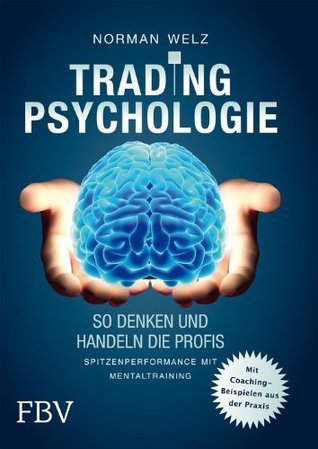
Traction: A Startup Guide to Getting Customers
by Gabriel Weinberg
30 popular highlights from this book
Key Insights & Memorable Quotes
Below are the most popular and impactful highlights and quotes from Traction: A Startup Guide to Getting Customers:
Almost every failed startup has a product. What failed startups don’t have are enough customers.
Poor distribution - not product - is the number one cause of failure.
The faster you run high quality experiments, the more likely you’ll find scalable, effective growth tactics. Determining the success of a customer acquisition idea is dependent on an effective tracking and reporting system, so don’t start testing until your tracking/reporting system has been implemented.
Many entrepreneurs who build great products simply don’t have a good distribution strategy.
The only essential thing is growth. Everything else we associate with startups follows from growth.
This is what we call the 50% rule: spend 50% of your time on product and 50% on traction.
Good customer support is so rare that, if you simply try to make your customers happy, they are likely to spread the news of your awesome product on that basis alone.
In the case of querymongo.com, RJMetrics built a tool that translates SQL queries to MongoDB syntax (two database technologies). This
To be clear, splitting your time evenly between product and traction will certainly slow down product development. However, it counterintuitively won’t slow the time to get your product successfully to market. In fact, it will speed it up! That’s because pursuing product development and traction in parallel has a couple of key benefits. First, it helps you build the right product because you can incorporate knowledge from your traction efforts. If you’re following a good product development process, you’re already getting good feedback from early customers. However, these customers are generally too close to you. They often tell you what you want to hear.
In other words, traction and product development are of equal importance and should each get about half of your attention. This is what we call the 50% rule: spend 50% of your time on product and 50% on traction
waiting until you launch a product to embark on traction development usually results in one or more additional product development cycles as you adjust to real market feedback. That’s why doing traction and product development in parallel may slow down product development in the short run, but in the long run it’s the opposite.
What this means is that over time, all marketing channels become saturated.
In particular, your tests should be designed to answer these questions: How much does it cost to acquire each customer through this channel strategy? How many customers are available through this channel strategy? Are the customers you are getting through this channel the ones you want right now?
At any stage in a startup’s lifecycle, one traction channel dominates in terms of customer acquisition.
If you’re starting a company, chances are you can build a product. Almost every failed startup has a product. What failed startups don’t have are enough customers.
Hold on to your other channel ideas. Compile your brainstorming ideas for each traction channel in a spreadsheet with educated guesses that you can confirm through testing. Even after you’ve chosen your core channel, you should keep these ideas around for future runs of Bullseye.
Many entrepreneurs think that if you build a killer product, your customers will beat a path to your door. We call this line of thinking The Product Trap: the fallacy that the best use of your time is always improving your product. In other words, “if you build it, they will come” is wrong.
After your growth curve flattens, what worked before usually will not get you to the next level.
Do you really need feature C or marketing activity Y? This is where founders often mess up: by focusing their limited company resources on things off Critical Path. You are generally competing with companies with significantly more resources than you. You cannot afford to waste what little resources you have.
spend your time constructing your product or service and testing traction channels in parallel.
There are four common situations where you could build something people want, but still not end up with a viable business. First, you could build something people want, but for which you just can’t figure out a viable business model. The money isn’t adding up. For example, people won’t pay, and selling advertising won’t cover the bills. There is just no real market. Second, you could build something people want, but there are just not enough customers to reach profitability. It’s just too small a market, and there aren’t obvious ways to expand. This occurs often when startups aren’t ambitious enough and pick too narrow a niche. Third, you could build something people want, but reaching them is cost prohibitive. You find yourself in a hard-to-reach market. An example is a relatively inexpensive product that requires a direct sales force to sell it. That combo just doesn’t work. Finally, you could build something people want, but a lot of other companies build it too. In this situation you are in a hypercompetitive market where it is simply too hard to get customers.
One such network is The Deck, which targets the niche audience of Web creatives. As an advertiser, you know exactly the audience you’re reaching.
In phase I, it’s getting those first customers that prove your product can get traction. In phase II, it is getting enough customers that you’re knocking on the door of sustainability. And in phase III, your focus is on increasing your earnings, scaling your marketing channels, and creating a truly sustainable business.
To be clear, splitting your time evenly between product and traction will certainly slow down product development. However, it counterintuitively won’t slow the time to get your product successfully to market. In fact, it will speed it up! That’s because pursuing product development and traction in parallel has a couple of key benefits.
Many entrepreneurs think that if you build a killer product, your customers will beat a path to your door. This line of thinking is a fallacy: that the best use of your time is always improving your product. In other words, “if you build it, they will come” is wrong.
Marc Andreessen, cofounder of Netscape and VC firm Andreessen Horowitz, sums up this common problem: The number one reason that we pass on entrepreneurs we’d otherwise like to back is they’re focusing on product to the exclusion of everything else. Many entrepreneurs who build great products simply don’t have a good distribution strategy. Even worse is when they insist that they don’t need one, or call [their] no distribution strategy a “viral marketing strategy.
The faster you run high-quality experiments, the more likely you’ll find scalable, effective growth tactics. Determining the success of a customer acquisition idea is dependent on an effective tracking and reporting system, so don’t start testing until your tracking/reporting system has been implemented.
Through traction development you get a steady stream of cold customers. It is through these people that you can really find out whether the market is taking to your product or not, and if not, what features are missing or which parts of the experience are broken.
Before you can set about getting traction, you have to define what traction means for your company. You need to set a traction goal. At the earliest stages, this traction goal is usually to get enough traction to either raise funding or become profitable. In any case, you should figure out what this goal means in terms of hard numbers. How many customers do you need and at what growth rate? Your traction strategy should always be focused on moving the needle for your traction goal. By moving the needle, we mean focusing on marketing activities that result in a measurable, significant impact on your traction goal. It should be something that advances your user acquisition goal in a meaningful way, not something that would be just a blip even if it worked.
Phase I—making something people want Phase II—marketing something people want Phase III—scaling your business


